
Carnton is a historic home and museum in Franklin, Williamson County, Tennessee, United States. The plantation played an important role during and immediately after the Battle of Franklin during the American Civil War. It is managed by the non-profit organization The Battle of Franklin Trust.
Franklin Battlefield was the site of the Second Battle of Franklin, which occurred late in the American Civil War. It is located in the southern part of Franklin, Tennessee, on U.S. 31. It was declared a National Historic Landmark in 1960.
The John Hunter House, also known as McCullough House, near Franklin, Tennessee is an Italianate style house that was built in 1875. It was listed on the National Register of Historic Places (NRHP) in 1988.
The Stokely Davis House was built in 1850 and included Italianate architecture and Greek Revival architecture.
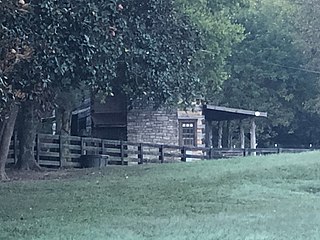
Old Town, also known as the Thomas Brown House, is a house in Franklin, Tennessee, United States, at the Old Town Archeological Site that was built by Thomas Brown starting in 1846. It is a two-story frame structure built on an "I-House" plan, an example of vernacular architecture showing Greek Revival influences. The Thomas Brown House is among the best two-story vernacular I-house examples in the county.

The William Boyd House, also known as All Bright Hill, is a c. 1800 double-pen house in Franklin, Tennessee, United States.
William King House, also known as Royal Oak Farm, in Franklin, Tennessee, United States, was listed on the National Register of Historic Places, but was removed from the National Register in 1996.

The Henry H. Mayberry House, also known as "Riverview", is a private home in Franklin, Tennessee located on Franklin Pike just north of the Harpeth River Bridge. Built in 1902 in Neo-Classical or Classical Revival architecture, it is one of the notable residences of the 1900-1935 period in Williamson County. At the time it was built it had the most technologically advanced utilities in the county, including electric lights and its own water works. It was listed on the National Register of Historic Places in 1988. When listed, the property included an area of 26 acres (11 ha).

The McGavock–Gaines House, also known as Riverside, is a historic mansion in Franklin, Tennessee. It was listed on the National Register of Historic Places in 1988. The property then included two contributing buildings, one contributing structure, and one non-contributing building, on an area of 3.2 acres (1.3 ha).

The Apheus Truett House is a frame house located at 228 Franklin Road in Franklin, Tennessee, that was listed on the National Register of Historic Places (NRHP) in 1988. Built in 1846, it is a notable example of a two-story vernacular I-house structure in Williamson County. It includes Central passage plan architecture. The NRHP listing is for an area of 5.2 acres (2.1 ha), with one contributing building and two non-contributing structures.

The Owen-Primm House was originally a log cabin built by Jabez Owen c. 1806, and later expanded with wood framing by Thomas Perkins Primm c. 1845. This property in Brentwood, Tennessee was listed on the National Register of Historic Places in 1988.
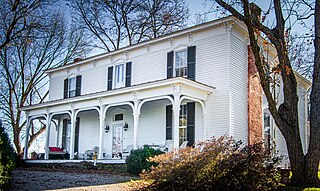
The Thomas L. Critz House, built c.1887, is a historic Italianate style house in Thompsons Station, Tennessee that was listed on the National Register of Historic Places in 1988. It is a two-story frame residence with a Central passage plan. It has a one-story porch with square chamfered columns.

The Franklin Hardeman House is a property in Franklin, Tennessee that was listed on the National Register of Historic Places in 1988. The property is also known as Sugar Hill and is denoted as Williamson County historic resource WM-291.
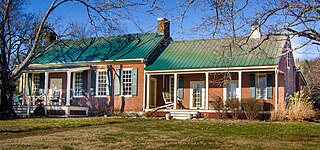
The John Crafton House is a historic property in Franklin, Tennessee, United States, that was listed on the National Register of Historic Places on April 13, 1988.
The Mordecai Puryear House is a center-hall house in Franklin, Tennessee, United States, built around 1830. Mordecai Puryear was one of the ten original investors in the National Bank of Franklin in 1871. The bank "was one of the primary financial institutions of the county" until it failed in 1926.
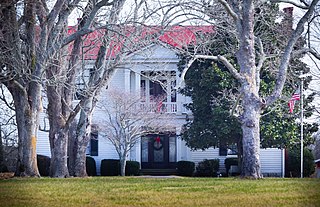
The Beverly Toon House is a property in Franklin, Tennessee, United States, that was listed on the National Register of Historic Places in 1988. It has also been known as Riverside. It dates from c. 1857.

Thomas Shute House is a property in Franklin, Tennessee, United States, that was listed on the National Register of Historic Places in 1988. The property has also been known as Creekside. It dates from at c.1845. When listed the property included three contributing buildings, and two contributing structures on an area of 4.8 acres (1.9 ha). The property was covered in a 1988 study of Williamson County historical resources. It is one of about thirty "significant brick and frame residences" surviving in Williamson County that were built during 1830 to 1860 and "were the center of large plantations " and display "some of the finest construction of the ante-bellum era." It faces on the Franklin and Columbia Pike that ran south from Brentwood to Franklin to Columbia.

The H. G. W. Mayberry House, also known as Beechwood Hall, is a historic antebellum plantation house built in 1856 in Franklin, Tennessee.

Claiborne Holmes Kinnard Jr. was a pilot from Franklin, Tennessee, who in World War II became a flying ace in the United States Army Air Force with the rank of Colonel. He is officially credited with the destruction of 8 enemy aircraft in aerial combat and another 17 on the ground while strafing heavily defended enemy airfields.
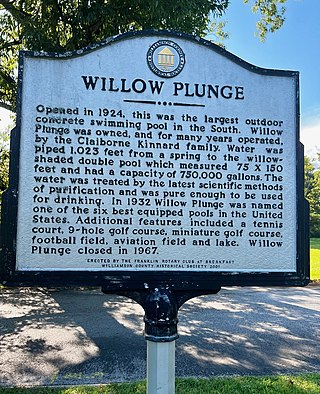
Willow Plunge was a privately-owned American swimming pool and recreational area in the middle Tennessee town of Franklin, near Nashville. The pool was in operation for over four decades during the mid 20th century. When it opened in 1924 it was the largest concrete swimming pool in the South and remained in operation until 1967. It featured two adjoining pools that were fed by a local spring. Sanitation was accomplished by replacing the pool water with fresh spring water on a regular schedule. The business was profitable, even during the Great Depression (1929–1939). In the 1930s it became one of the most popular and best equipped swimming pools in the United States according to the Tennessean. After 43 years in existence, the pool was closed in 1967 and a historical marker is all that remains.

















